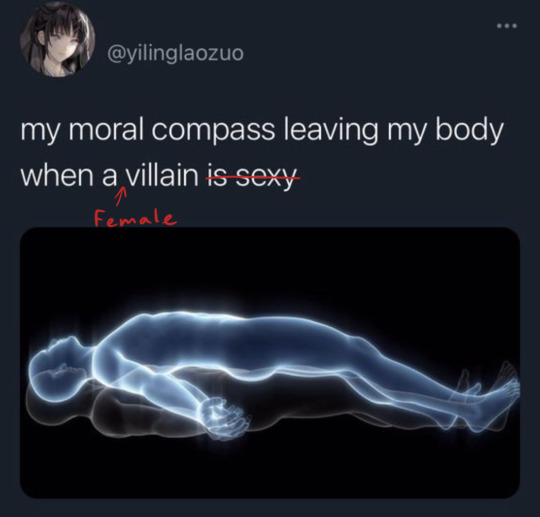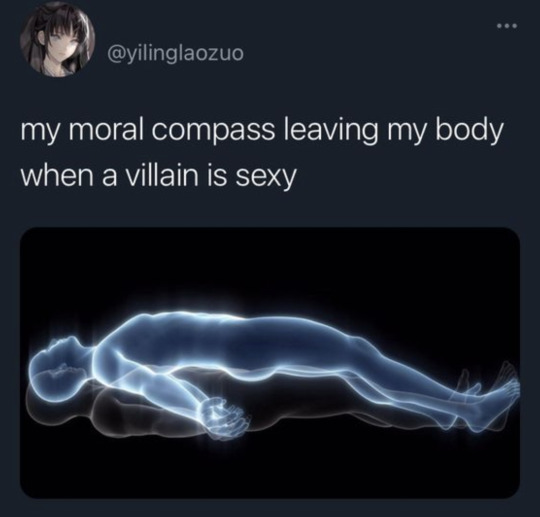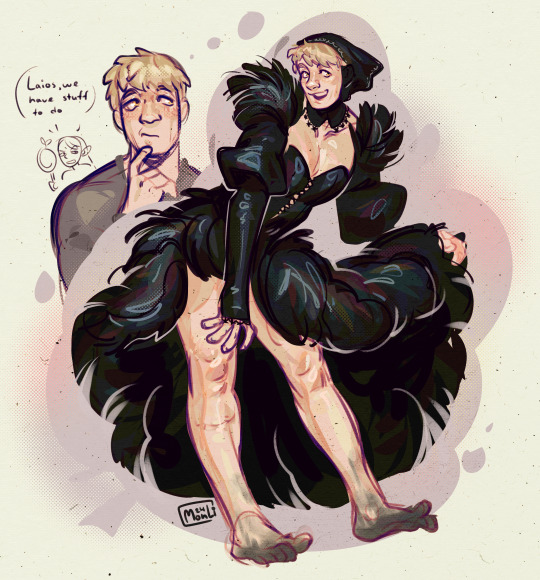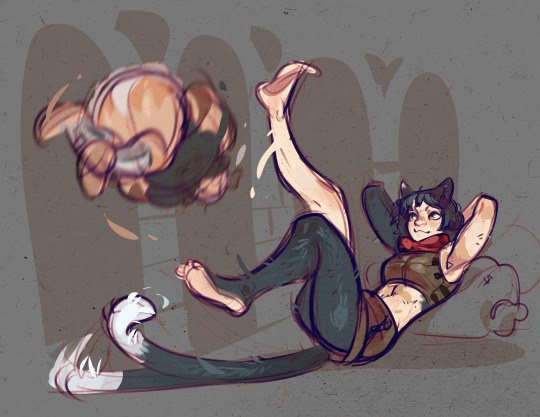Misha | he/they | 22 | AuDHD + OCD | twt/bsky- @monlikolI mainly draw my OCs and comms, fanart is very rare Sci-fi lovers unite!
Don't wanna be here? Send us removal request.
Text
Alien Questionnaire - A Biological Perspective
A while ago, somebody linked me a very comprehensive worldbuilding questionnaire. For most aspects of a fictional society, it was great, but I noticed it assumed that anyone using it was making up a fictional human society, or at least a society of beings very similar to humans. As such, there was almost nothing in the biology department, which to me is one of the best parts! Thus, this questionnaire was born.
These questions are designed to help people worldbuild from a biological foundation. As such, the questionnaire only touches lightly on other aspects of a fictional society, and is more of a jumping off point. I wrote it with the aim of using it to develop aliens, but it should be suitable for any project with non-humanoid species, such as sapient terrestrial animals.
Have fun! I'd love to see your answers :)
------------------------------------------------------------------------------
General Anatomy How many limbs do they have? Do they have limbs at all?
What are their primary manipulators? Where are they located? How does this affect their tool use, building ability, etc?
What kind of body covering do they have, e.g. hair, scales, feathers? How do they clean it? Do they shed this covering constantly, or all at once at certain times?
Can they maintain a constant body temperature? If not, how do they deal with changing environmental temperatures?
What kind of habitat do they live in? Both specific habitat, and broader such as on land vs in water.
What adaptations do they have for living in this habitat?
What kind of creature did they evolve from?
What are the similarities and differences to their closest living relatives?
What resource(s) is the most necessary and urgent for them? E.g. for many animals, but not all, it’s water.
What are some common mutations? E.g. eye colours, ability to digest lactose in humans.
What injuries or illnesses are considered disabling?
How is their healing ability? Can they regenerate? If they can, is that limited to certain body parts or a certain number of times?
Senses What senses do they have? E.g. sight, smell, electroreception, etc.
How good are those senses?
Which of their sense/s do they use the most in everyday life?
How might this choice of sense impact the way they interact with the world?
Can they detect things that Earth creatures cannot? If yes, how and why?
Movement How do they move? Do they walk, crawl, fly, etc?
If they have multiple modes of movement, which is preferred, and why?
Which part/s of their body do they use to move?
What is their speed and endurance like?
How agile are they?
Do they rely mainly on their own bodies for travel, or do they use pack animals and machines?
How often do they move around? Are they mainly sedentary, do they move a lot within a set area, do they migrate, etc?
Do they have different levels of mobility depending on age, sex, or other biological group? E.g. young barnacles are able to swim, while adults are anchored permanently to a surface.
Reproduction and Lifecycle How many sexes are there?
Are there differences between the sexes (ignoring the reproductive system)?
Are there different castes, such as in honeybees or naked mole rats? If so, what is the function of each caste?
Are differences in sex or caste used to justify discrimination or hierarchy? How might these ideas differ in different populations?
Do they have a concept of gender? If so, is gender affected by sex, caste, or some other factor?
How do they attract a mate? Do they release a chemical into the air, do an elaborate display, etc?
Does one individual try to actively woo another, or is courtship more mutual?
What do they find attractive in members of the same species?
What is the usual reproductive partnership? E.g. two individuals, one main reproducing individual with a harem, no set partner, etc.
How long do they live?
How are young brought into the world? Live birth, eggs, spores, etc?
Is producing young a painful, dangerous process, or is it easy?
How much parental investment is there? Are there many young with little investment, or few young with a lot of investment (r vs K strategy)? Or is it somewhere in the middle?
How many offspring are produced at a time? Think about how attitudes towards children may differ between a species that produces one or two, and a species that produces dozens or even hundreds at a time.
How do they grow? Are they born looking like miniature adults, gradually growing bigger? Do they have specific phases of high growth, like puberty? Do they have a larval phase, metamorphosis?
How self-sufficient are they as young? Can they move around and feed themselves as soon as they are born? Do they require parental care?
What is the usual structure of childcare? Single or multiple parents/related individuals? Communally raised?
Is sex purely for reproduction, or does it serve other purposes?
What kind of sexuality is considered the norm? This doesn’t just refer to same/other sex pairings, but the culture around sex in general.
Diet and Foodchain What is their diet? Are they carnivores, omnivores, frugivores, insectivores, etc?
Do they feed off an unusual source, for example rocks, metals, or (in appropriate settings) something like magic or souls?
What physical adaptations do they have for this diet?
Is their diet very restricted, or can they have a wide range of foods?
How often do they eat? What is the culture around mealtimes, if any?
Are they prey for other organisms? For each other?
If they are, how do they deal with it? Do they fight back, have barriers, or do they accept it as a part of life?
If they are hunters themselves, what is their attitude to killing other organisms? Are they respectful? Prideful of their kill? Is it completely trivial?
If they are hunters, how do they hunt? Are they solitary or packhunters? Are certain members of the group designated to hunt?
Are the results of foraging or hunting shared, or is it everyone for themself?
Are they parasitic, parasitised, or in a symbiotic relationship with any other organisms?
Body Rhythms How often do they sleep?
What time of the day are they most active? Are they nocturnal, diurnal, crepuscular?
Do they generally sleep for one long period a day, multiple shorter periods throughout, or something in between?
Do they sleep to cope with extreme temperatures or bad conditions, i.e. hibernate or aestivate?
Do they have any biological processes that disrupt their life e.g. moulting, reproductive cycles, etc?
If yes, how does their society accommodate for these processes? Does it accommodate them at all?
Communication What is their main method of communication? Sound, visuals, scent, etc? Think about their main sense and how this would affect communication.
What is their body language like? What small moving parts might aid their body language?
If they have multiple methods of communication, are they all given equal weight, or is one considered higher than others?
Society How sociable are they?
If social, what is the usual social structure?
Are there hierarchies? How strict or relaxed are the roles?
How are disputes usually settled? Is it more common to be violent or appease the other party?
If not social, what is the reaction to being with other individuals? Do they become aggressive or stressed? Do they tolerate each other?
What is the usual size of a community? Do they have communities at all?
Do they have an in-group vs out-group mentality? If so, how strong is it? This generally relates to how scarce or plentiful resources were during their evolution, and how territorial their ancestors were.
What kind of bonds do they form?
On the spectrum of individualistic to community-oriented, where do they fall?
Do they have a strong sense of personal identity? Think about how this might tie in with the previous question.
What are the main things they derive identity from? Occupation, gender, family ties, etc?
Do they have names? If yes, how are these names formed? Are they given by another party or chosen by the individual?
Have they domesticated any creatures? If so, what do they use these creatures for?
Do they have any unusual relationships with other creatures on their planet (beyond predation, parasitism or mutualism)?
Do they produce art? What are their main forms of artistic expression? Think about how this will be linked to their main sense(s), communication method, and/or primary manipulators.
------------------------------------------------------------------------------
GLOSSARY Primary manipulator: Main body part used to manipulate objects, e.g. hands in humans, trunks in elephants, feet in parrots.
Sedentary: Inactive, staying in the same place.
Caste (reproductive): A group within a species with differences in body type and reproductive ability.
Symbiosis/Mutualism: Interactions where both parties benefit, e.g. cleaner fish getting a meal in exchange for picking irritating parasites off larger fish.
Aestivate: To become inactive during hot or dry periods, usually involving being sealed in mucus or soil e.g. lungfish, snails.
Reproductive cycle: Regular hormone fluctuations that affect an animal’s fertility or attitude towards breeding. The cycles can range from months to years and can include things such as antler growth in male deer, heat cycles, and menstruation in humans.
2K notes
·
View notes
Text

Drawing happy hubby looking at his giant wife
11 notes
·
View notes
Text
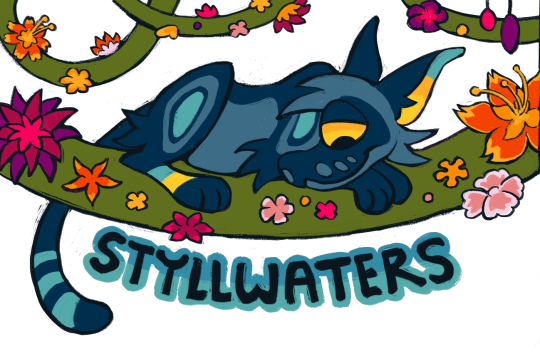
Hi! I'm Styll! (any pronouns). I'm an Australian digital artist and tumblr is where I am most active at the moment. I adore speculative + marine biology, worldbuilding and original characters.
My main headworld at the moment is Vivere 44, an alien-centric sci-fi story set in a fictional galaxy known as Zhagaviit. It's still a big work in progress, but I post updates here regarding art, designs, lore and characters! Feel free to send in asks as well - I always do my best to answer them.
───────────────────────────────
⚡️ DIRECTORY ⚡️
☆ art tag - #my art
☆ headworld - #vivere 44
☆ sophonts - #sea crawlers / #arrows / #knights / #posthumans
☆ my ramblings - #styll speaks
🌺 OTHER BLOGS 🌺
-> @tealspace [art only blog]
-> @of-fear-and-fate [dark fantasy headworld]
───────────────────────────────
⚡️ SOCIALS ⚡️
Toyhouse: Styllwaters
Discord: styllwaters
Twitter: styllwatersHQ
Artfight: Styllwaters
───────────────────────────────
⚡️ ART STATUS / BOUNDARIES ⚡️
Commissions: CLOSED
Requests: CLOSED (Unless related to my own creations)
Art Trades: OPEN (Mutuals only)
👽 Do not make nsfw content of my characters or send me nsfw asks. I will not be answering them.
👽 You can make fanart and fan characters based on my worlds! (Tag me so I can see it!) You can also use my art as profile pics/banners with credit.
───────────────────────────────
⚡️ DISCORD SERVER ⚡️
I run a 13+ discord server where you can post art, original writing/worldbuilding, and talk about speculative biology! We mostly hang out, roleplay, and talk about creatures and whatnot. Anyone is welcome (provided they are respectful to others!)

(Sophont species and their respective creators listed here!)
125 notes
·
View notes
Text
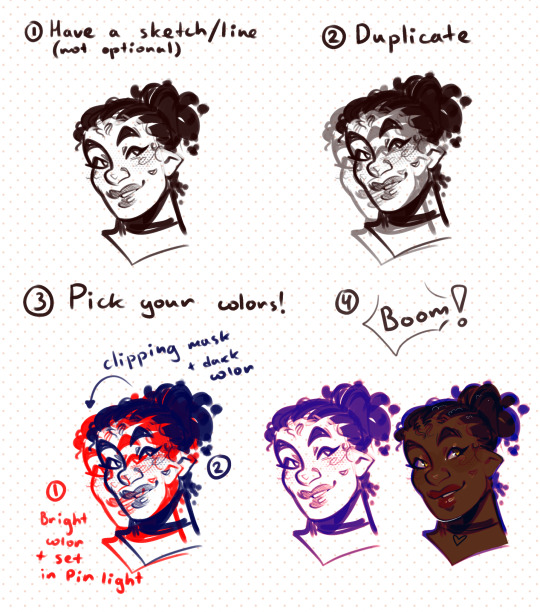
Was asked on twt how I make the lineart so soft and cool looking, here’s a little tutorial featuring my OC Imras
Bright bottom layer in pin light + dark top layer usually works the best, but you can experiment and do any other combination!
Works really good with sketches and textured brushes, makes stronger lines pop out more
#myart#OCs#Imras#digital art#tutorial#art tutorial#arttutorial#art lesson#art advice#drawing tutorial#drawing advice#lineart#line#sketch#skecth art
105 notes
·
View notes
Text
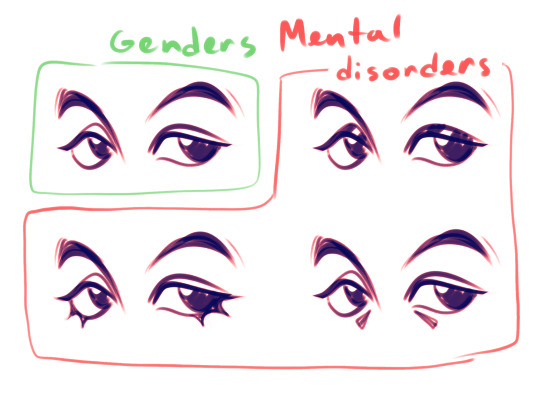
PSA for y’all
(The joke is actually about these eye drawing memes circulating every couple of months)
#art#my art#nonocs#digital art#artmeme#meme#art meme#artist meme#eyes#eye meme#art eye meme#drawing eyes#reference#tutorial#joke#jokey jokey joke
56 notes
·
View notes
Text
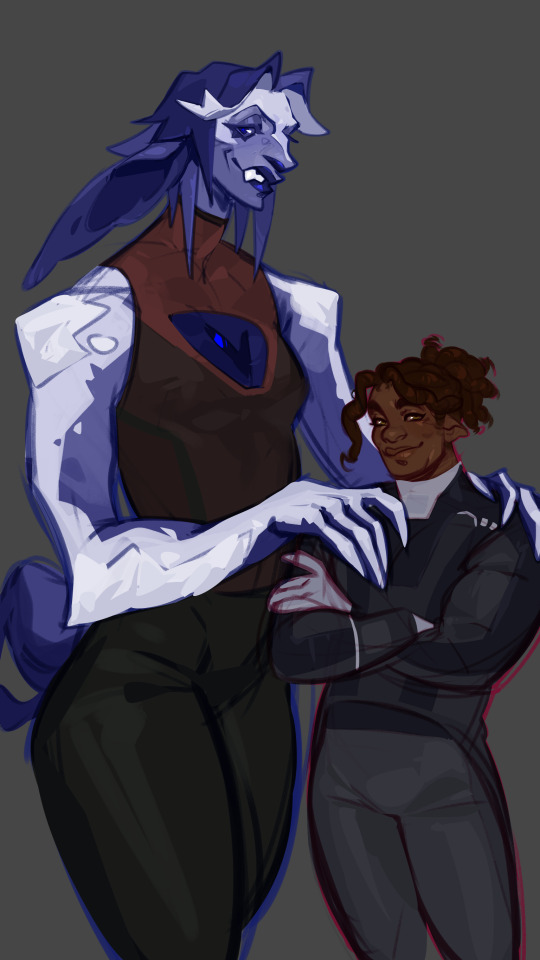
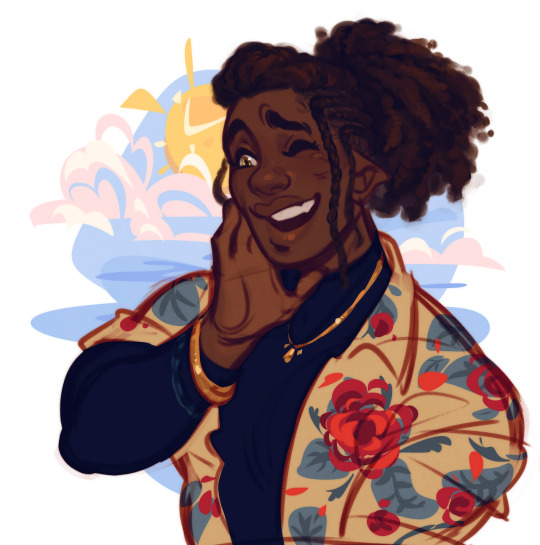

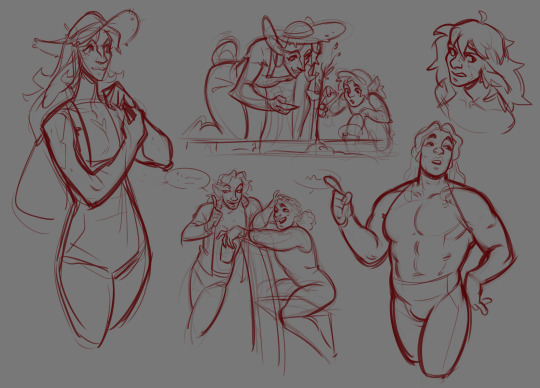
OCs they are my life and my reason to live Kaijah (she/they/moon) - the giant blue bunny lady who is an ancient four dimensional alien Imras - (he/they/she) - human-ish federation diplomat and special agent Sci-fi lovers and sci-fi artist hiii i will follow ya i need ya
#myart#myocs#digital art#sci fi oc#alien oc sci fi#scifi#sci-fi#alien#science fiction#spec evo#speculative evolution#art#Kaijah#Imras
23 notes
·
View notes
Text
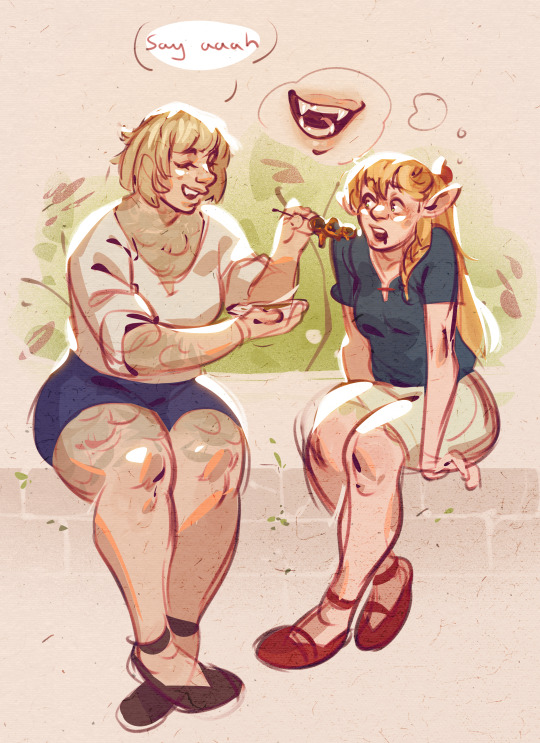
Yuri nation unite Hi im new on here and i rarely draw fanart but if you like my style follow me tee hee
#fanart#nonocs#digital art#myart#marcille donato#marcille dunmeshi#marcille#falin thorden#falin x marcille#falin dungeon meshi#dungeonmeshi#dungeon meshi#delicious in dungeon#farcille#falin
2K notes
·
View notes
Text
if you've never engaged with a creative art on a regular basis you need to understand that it requires concerted effort to get into "the groove" to make something and every second that it takes to get into that groove causes physical pain, but the only thing worse than doing it is not doing it.
108K notes
·
View notes
Text
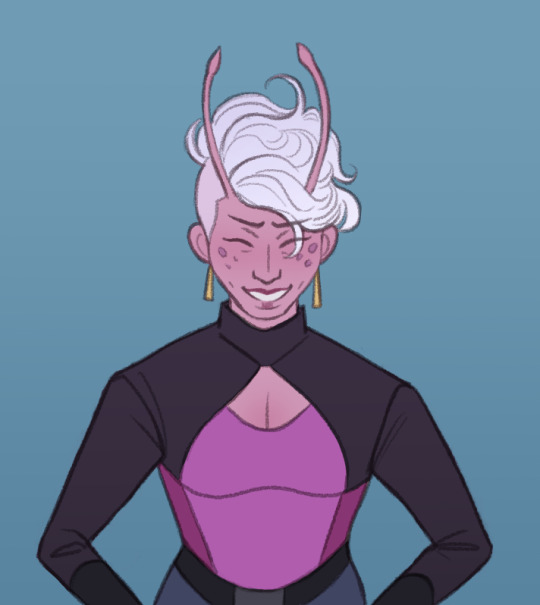




threw some color on some of the lineart from this comic for funsies
18 notes
·
View notes
Photo

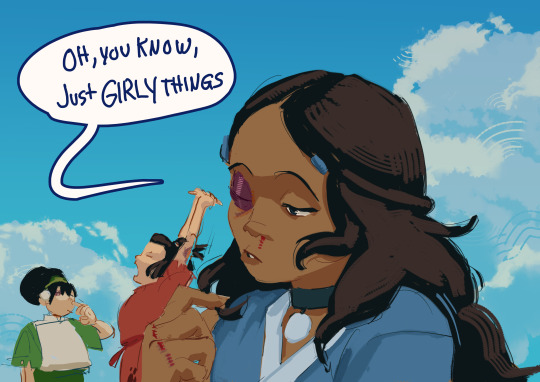
also posting these two on their own :-) based on This post by @outpastthemoat
35K notes
·
View notes
Text

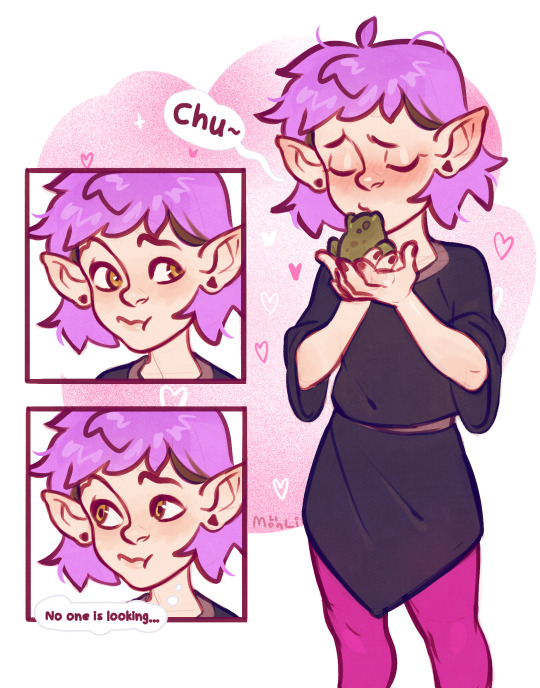


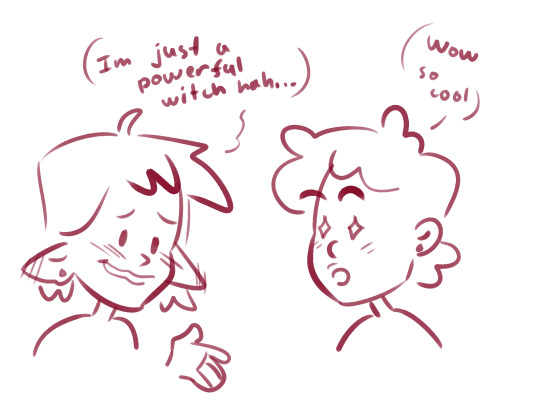
Old thingy with Lumity
#lumity#amity blight#toh fanart#toh#toh amity#toh luz#luz noceda#the owl house luz#the owl house#the owl house amity#fanart#art#myart#nonocs
3K notes
·
View notes
Text
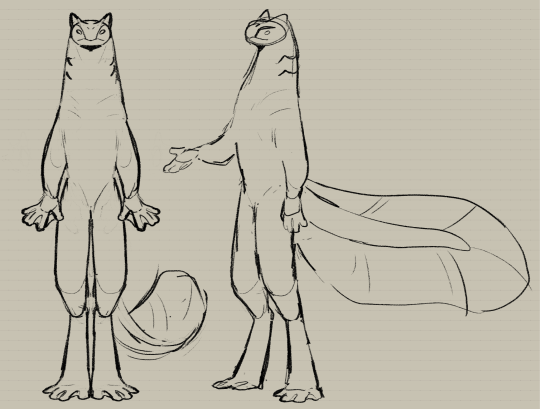
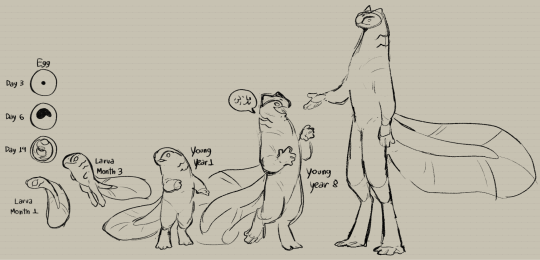
Hanasei
Avg. height: 1.70-2.20m | Avg. weight: 80-150 kg | Hyper-carnivores | Semi-aquatic lifestyle | Lifespan: ~120 years
Hanasei are a semi-aquatic species that originate from lakes, but expanded their settlements into rivers and other large bodies of water. They're a medium-sized biped with a hard keratin helmet where horns sprout from and a tail with large fins. Their skin is slightly damp, and can range from smooth to bumpy, that affects their transpiration and how often they must hydrate. They have both two nostrils located at their helmet and from 2 to 4 gills on both sides of their neck, of which are used for speech in land and breathing underwater, while the nostril's only function is on land respiration. Their necks are strong and well develop, and can expand or contract.
Both hands and feet have webbed fingers to facilitate swimming, but the webbing on the hands can retract for better dexterity when handling utensils. Their amphibious lifestyle left them being only decent at both types of locomotion, but their versatility makes up for it as they can comfortably transition to both environments. They're hyper-carnivores and will eat anything made of animal matter, including bones.
They are the only sexless sophont in Koegama, using Aether as a reproduction tool instead of a biological system.
More physiology dump undercut! Warning, long
Head
The common head structure of a Hanasei is somewhat flat, with a stout snout and large jaws. Proportions and shape vary per individual, and slight deviations from standard models are common. Sometimes, small barbels, whisker-like structures, will grow from their jaw and upper lip area. They give a small boon to the olfactory systems, but otherwise have no major benefits.
Horns
While the protrusions on Hanasei's heads are not anatomically horns but a different keratin appendage, horns are the most common colloquial term. Their main purpose were for fighting and a display of health and fitness to potential partners. Nowadays, most Hanasei have no real use for their horns other than decorative, but individuals may favor different horn styles compared to others.
They don't shed, growing through their infancy and plateauing around 23 to 27 years old. If a horn is broken mid-development, it will continue to grow, resulting in mismatched horns and branched protrusions depending on the type of damage. Once the horns stop growing, the blood and nerve system will shrink and be absorbed, leaving the area with no sensation and regrowth impossible. Cracks and missing pieces being a common sign of age.
Variance
Horns are very vulnerable to Aether tampering, leading to a numerous amount of styles and types to exist. Larger, more elaborate horns can make swimming more difficult, but overall the range is stable and harmless.
The presence of horns and the pair number is not affected, with 2 horns always present.
Eyes & Ears
Hanasei have good night vision, but poor eyesight in general. They can recognize the shapes around them and a few colors, but their daylight and night vision are almost the same otherwise. Their eyes can have different shapes and colors, but the effect is purely visual as their eye sensors work the same regardless of their appearance.
Hanasei don't have visible ears, but a tympanic membrane around their cheek area, which is able to pick up vibrations both in and out of water. They have great hearing, and are more aware of vibrations such as tremors and footsteps. They can voluntarily close their inner ear and stop themselves from picking up sounds, a common method for falling asleep.
Mouth
Hanasei lack teeth, using their upper jaw protrusions to hold and rip food instead. They have a powerful bite, being able to hold down things with immense pressure. Their tongues function like a catapult, with the tip facing the inside of the mouth on a resting position and launched outwards when needed, their saliva being sticky and helping trap prey inside their mouths. With cooking and more efficient methods of getting food, this isn't a common practice anymore, unless one spotted a quick snack. Unlike the other sophonts, Hanasei are still able to eat raw meat and may supplement their normal diet with bugs, fish and other easy to snag creatures in between activities.
They have very powerful and sensitive taste buds, coupled with a taste disc that lets them distinct between minute differences in food. Their mouth, just like most of their organs, tend to take the most prominent color of their Aether.
Respiratory system & Speech
Hanasei has two different systems for breathing. Outside of water, their nostrils are open and air moves through their cavity into their respiratory organs, and their gills are used for channeling sound. Air can be directed to their larynx, which is specialized for manipulating air into sound similar to vocal cords, which is only connected to the gills and not nostrils. This separate system means Hanasei can talk while breathing, and their vocalizations are very impressive, being able to mimic almost any sound they hear with practice. They can alter these sounds with the opening and closing of the larynx openings and changing how open or closed their gills are. To keep their gills from drying, the parts used for respiration often retract or close, but Hanasei in drier climates must moisturize their gills at intervals to prevent internal damage.
Underwater, their nostrils close and their gills stay open. Most of their larynx close, and filter capillaries expand to better capture oxygen diffused in the water. This makes vocalization underwater impossible, and sign language is the most common replacement. Hanasei can have 2, 3 or 4 gills on each side of their neck, and the shape of the gill can be varied, creating "accents" for each Hanasei in their relaxed voice.
They have a good olfactory system, being one of their most reliable senses. They're able to smell the humidity in the air and incoming rains and droughts. Because this uses their nostrils, they're unable to smell anything underwater.
Body
Hanasei size and builds are diverse, with individuals building muscle mass, fat and other outside factors influencing how they look. Their proportions stay consistent, with necks around the same size of their torso, short arms and elongated legs bigger than the torso itself, but deviations aren't uncommon.
Limbs
Hanasei arms start with their shoulders placed at the lower area of their torso, and stop with hands on their hips. Despite the shorter length, they have impressive arm strength and weaker Hanasei are known to rival other species' average. This makes them great at carrying things, and grabbing and holding down prey and foes. Their hands are dexterous when the webbing is retracted, but they lose a lot of maneuverability when extended.
Their legs are long and muscular, granting them an upright walk. They're not very fast, averaging 7 km/h running speed, but they have great endurance and the ability to jump high vertical distances and can pounce forward if crouched. Their muscle system can lock into a crouching stance, a comfortable stance comparable to sitting. Their feet are digitigrade but their fingers are big and wide, with a large base, keeping their body in balance and stable at the cost of mobility and grace.
Tail
Hanasei tails are long, with a vertical caudal fin that often extends beyond the base and helps them swim. This fin can regenerate when damaged, and broken or rotten tissue can lead into an entire chunk or the fin removed to speed recovery and promote an even replacement.
Fins are classified into two types, regular and segmented. Regular fins are connected into one piece, while segmented fins are broken down into various fins of different sizes and shapes, similar to fish fins. No matter the type, their shapes are kept hydrodynamic and tailored for swimming. Sometimes, the size of the base tail will also be shorter or longer than average.
Hanasei swim in two ways: a horizontal wave movement and by kicking their legs. The former is done with the help of their tail fins and is the slower of the two, but costs less energy. Hanasei will often alter the surrounding current with Aether to make this movement faster, with an average of 11 km/h. Leg kicks are less common as long term swimming and rather used for short bursts of speed and distance, and the longer one uses it the more they'll tire and may be unable to swim without resting. The peak swimming speed of Hanasei is around 20 km/h, taking leg kicks into account. As they were ambush and endurance predators, the lack of speed was not an issue for them. Depending on their fin shape, individuals may have different ways of swimming.
Aether
Their natural Aether is Nam Aether. They make use of it to help their swimming and underwater hunting, and to keep themselves damp. They tend to cast Aether from their mouths, as their Aether glands are present on their throat.
In their breeding months, their Aether start producing cells for reproduction and lose their usual abilities. This months-long limitation leads Hanasei to not be involved with using their Aether proactively or learn new skills, preferring to rely on technology to harness and utilize Aether instead.
Reproduction
Egg
To create an egg, two or more Hanasei spit out and mix their Aether together in a body of water. The resulting foam will stick together and in 3 days will develop into an egg, and one healthy Hanasei can produce enough reproductive Aether to make 200 eggs. This can only happen in the breeding period of Hanasei, usually on the 2nd and 8th month of the year. Modern Hanasei societies will instead send their reproductive Aether to the labs of the area, which will store it to create eggs with more efficient mixing machines and incubators.
The Aether inside the egg will segregate itself into larva stem cells and the nutritious yolk. After 12~14 days, the egg will be completely dry and the larva will eclode. The volatility of Aether means many larva never form or form incorrectly, and these eggs are discarded and repurposed or eaten. Only 1 in 50 eggs actually eclode, and this high rate of failure leads Hanasei to not view eggs as their young or a new generation, but more of a vessel that can fail or succeed. They have no qualms with re-purposing eggs in food, experiments or any other procedure.
Larva
Larva, often called notes, are very different from their adult counterparts. They're not considered sapient when they first hatch, but their growth is rapid and by 3 months in, they'll have the intelligence of a one year old toddler and have legs and arm stubs growing, alongside the keratin helmet and an underdeveloped nostril. This growth is fueled by a great appetite, and Hanasei larvae are omnivores and will eat almost anything they can fit in their mouths.
At the 9th month, they'll have most of their limbs developed to their young proportions, but their respiratory system will need an additional 3 months to allow for respiration outside water. Larvae at this stage will take short dips into land to push their muscles and lungs, until they no longer need to return to water to breathe.
Young
Once a larva can leave the water, they're called a young. "Young" encompasses the children and teenager years, lumped together as they no longer share any major physical differences from each other or to adults. The rest of their growth will be in size and intellect, slowing down from the quick pace of their larval years into a more normal 20 or so years to reach maturity. The main exception are horns, which only start growing around their 5th year and can take over a decade to finish growing. Smaller horns may plateau faster.
409 notes
·
View notes
Text
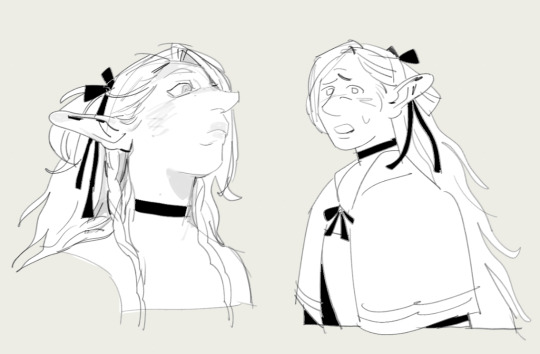
ilove marcille alot ithink she needs a longer nose she is brave she deserves a longer nose
585 notes
·
View notes
